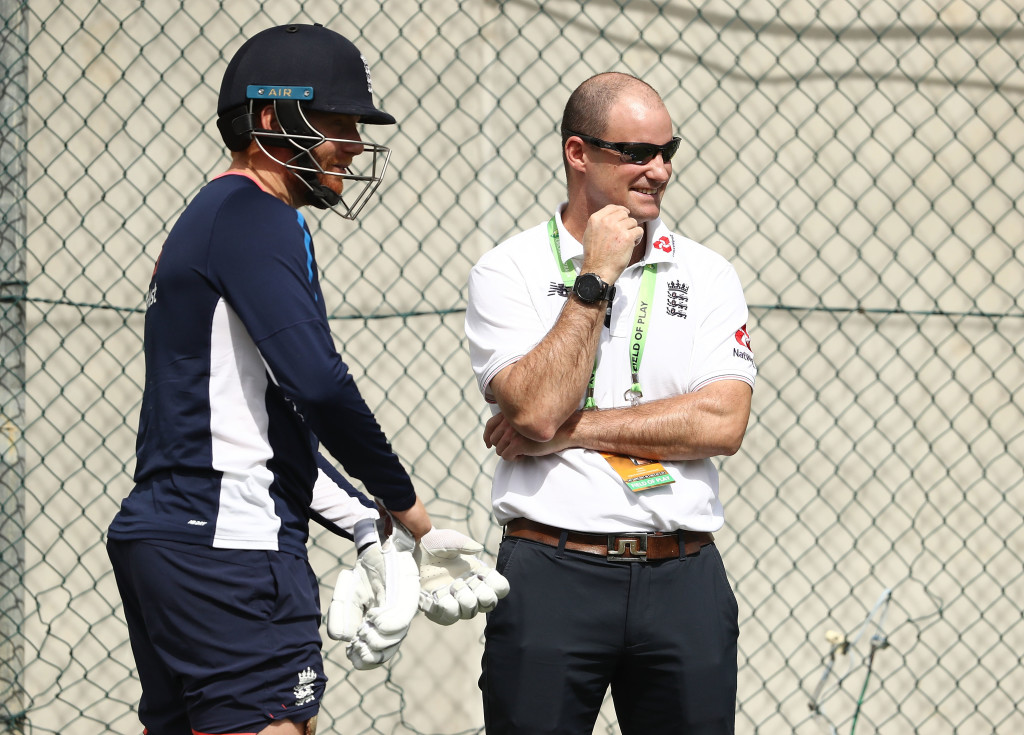
Five years ago to the day on Monday, Matt Prior and Monty Panesar salvaged a Test series draw for England at Eden Park in Auckland.
Oh, what the tourists would have done for a repeat.
There wasn’t to be any deja vu this time and England didn’t deserve anything of the sort.
If the North Island’s weather gods had not interrupted proceedings for the best part of two days, then there was no way this first Test in the two-match series would have gone the distance.
A belligerent batting effort only put-off the inevitable as hosts New Zealand claimed an emphatic win by an innings and 49 runs.
The ball-tampering scandal may have enabled England to bury the bad news of a woeful first-innings batting performance, in which they were skittled out for 58 in their sixth-lowest Test total ever, but Joe Root’s men have no hiding place after suffering their tenth loss in 12 away Tests and fifth defeat in six matches.
The list goes on: one win in their past eight aways series, four wins in 32 Tests on the road since 2013. It’s the travel sickness that just isn’t going away.
Test Match over on Day One
This game was done early on.
Kiwi pacemen Trent Boult and Tim Southee are excellent, but they didn’t need to excel to take 10 wickets between them and prolong a winter of discontent for England.
Pitch it up outside off-stump and you’ll get your reward. A pretty basic formula at all levels of cricket, although one which works time and time again against batsmen from the British Isles.
Lack of foot movement, poor shot selection and inability to bat with a mindset that your wicket is your most-prized possession at all costs, seems beyond England.
In New Zealand and Australia, the conditions aren’t completely alien. Technique, at times, has made many question whether any of these English batsmen actually learnt their trade on pitches at home.
Individuals will be picked apart in this latest post-mortem, with the second Test coming up fast on the rails and starting in Christchurch on Friday. But this is a collective problem.
Ben Stokes’ final-day stand with Chris Woakes was only the fifth England batting partnership all winter to have lasted more than 180 balls.
Test matches are not won when you fail to occupy the crease for long periods. Is there no pride in gritting some teeth and making the opposition work to get you out?
England have lost their knack of doing just that and it’s worrying.
After all, isn’t Test cricket the beacon of success for the nation? The pride of place on the mantelpiece.
Sadly, this proud tradition seems little more than a concept of the imagination. There’s been a cultural shift, whether England planned for it or not.

New Zealand were full value for their victory.
How can England fix their woes in Test Cricket?
Not easily, is the honest answer. Moving on from coach Trevor Bayliss – a man who has transformed fortunes in ODI cricket certainly – is a necessity in the five-day format.
The Australian has said he will finish his all-form contract after the 2019 Ashes series and while it’s too much to comprehend at the moment what state Australia will be in next year, England need some new impetus in the age-old format.
When you are out of the team, you are always a better player. A cliche that always rings true in cricket when someone has a bad game.
England have been short of alternative options with bat and ball for a while, but that’s not to say the current crop aren’t good enough.
Many of them are outstanding cricketers – but just aren’t producing. Is someone like Liam Livingstone, one of the next batsman in line to get a chance, better than a Mark Stoneman or Moeen Ali for example? It’s chalk and cheese.
The experienced players, aside from James Anderson, are woefully short of form and confidence. Indeed, the bowling attack is one dimensional and but for the heroics of the 35-year-old, you wonder where the wickets, let alone 20 needed to win a Test, are going to come.
At the risk of sounding like a broken record following the Ashes thrashing, no variety, pace or freshness is evident.

Have England been short-sighted in their approach?
Failure to foresee impact of white-ball cricket on England’s Test side
For too long there has been a bit of a thought-process that things will just come good in English summer conditions and the winter can be just forgotten about.
Director of Cricket Andrew Strauss has enforced changes in the selection and scouting of talent to ensure England are more well-travelled and all-rounded but that takes time and ultimately the focus on limited-overs cricket, with the World Cup looming in 2019, has shifted England’s priorities.
You can’t blame them for wanting to do well in that tournament, but the balance needs to have an equilibrium across the board.
Add in the noise around players like Alex Hales and Adil Rashid – two men who could genuinely force their way back into the Test reckoning – who have instead chosen to pursue white-ball contracts for the coming period, and it says it all.
At no other point in the past decade has there been so many places up for grabs in the Test side. Yet, at the moment, it’s hard to give them away.
Theoretically, an opener’s berth, top-order batting slot, spinner’s role and up to two pace positions are available for someone who steps up. Unfortunately, the vibe at the moment is that players’ are better off pursuing ambitions elsewhere disregarding first-class matches and a future in Test cricket.
Of course, it’s a problem the global game is facing but who would have thought that would ever really be the case for England?